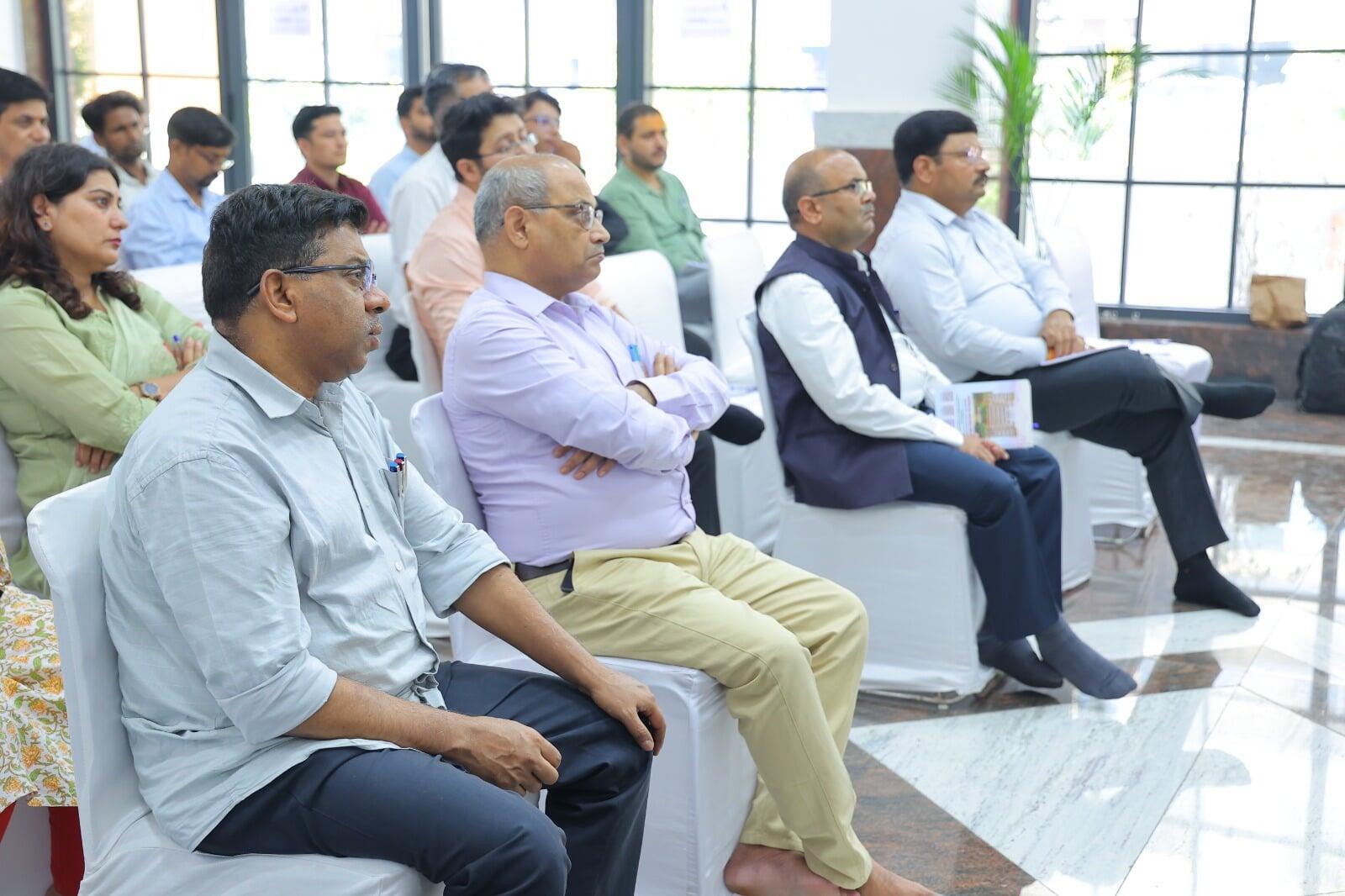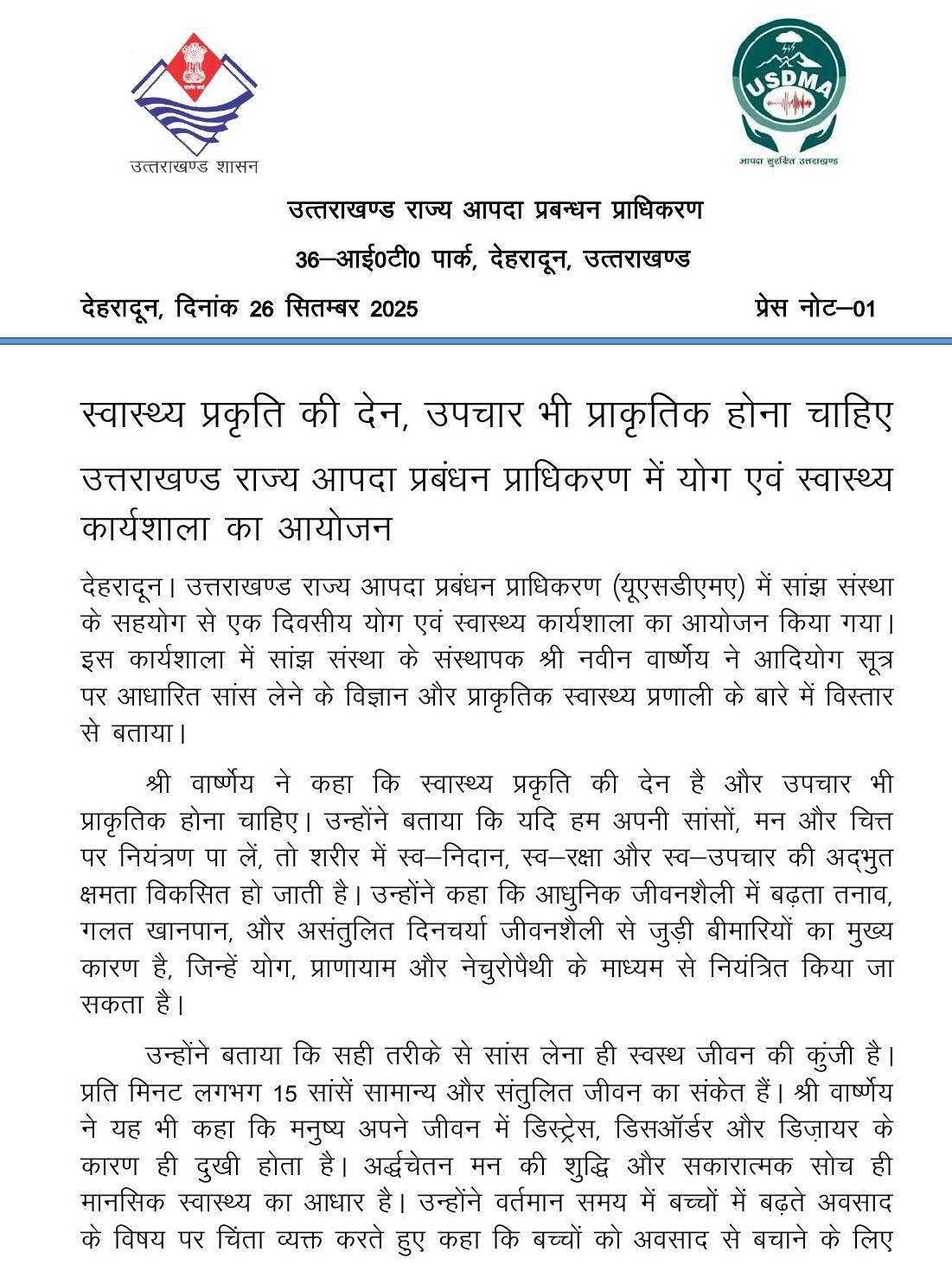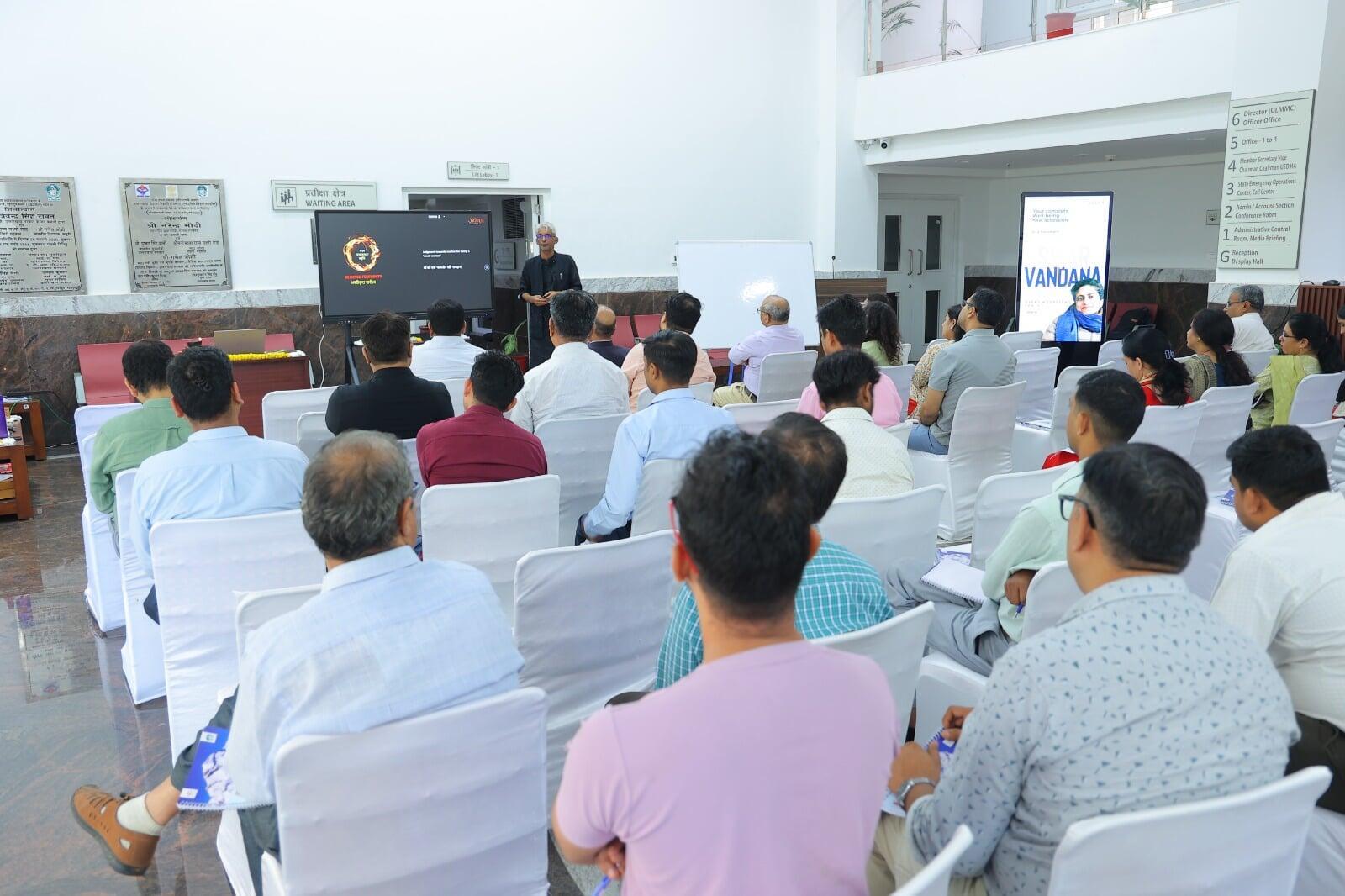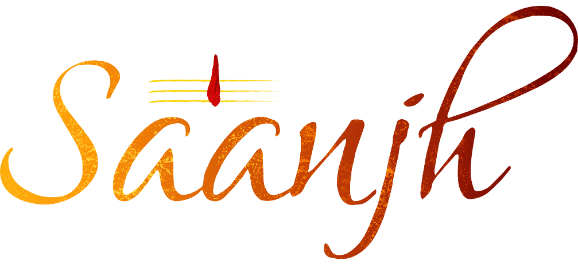When Government Officials Learn to Breathe: What This Says About Our Times
Last week, disaster management officials in Uttarakhand attended a workshop on breathing techniques and natural healing. This wasn't team building or wellness theater. These are people who coordinate flood responses and earthquake relief—they know what real emergencies look like.
Yet they gathered to learn something our grandparents knew instinctively: how to breathe in order to align with nature.
The Pattern Behind the Headlines
The workshop, led by Saanjh.ai's Naveen Varshneya, focused on what he calls the Adiyog Sutra -14 years of research to scientifically decode the universal pattern of human suffering. This isn't mystical language. It's pattern recognition applied to human biology.
The officials learned that 15 breaths per minute indicates a normal and balanced life. Most of us have lost count entirely.
Here's what this reveals: We've created work environments so intense that even our emergency responders need emergency response for their own nervous systems.
The Real Crisis
Varshneya explained that health is nature's gift, and treatment should also be natural. This sounds simple, but it addresses something profound—we've externalized solutions for problems that often need internal attention.
The workshop identified three sources of human suffering: distress, disorder, and disease. All connected to how we breathe, think, and live within natural rhythms.
Consider this: We have sophisticated early warning systems for natural disasters, but most of us can't detect when our own stress response is triggered.
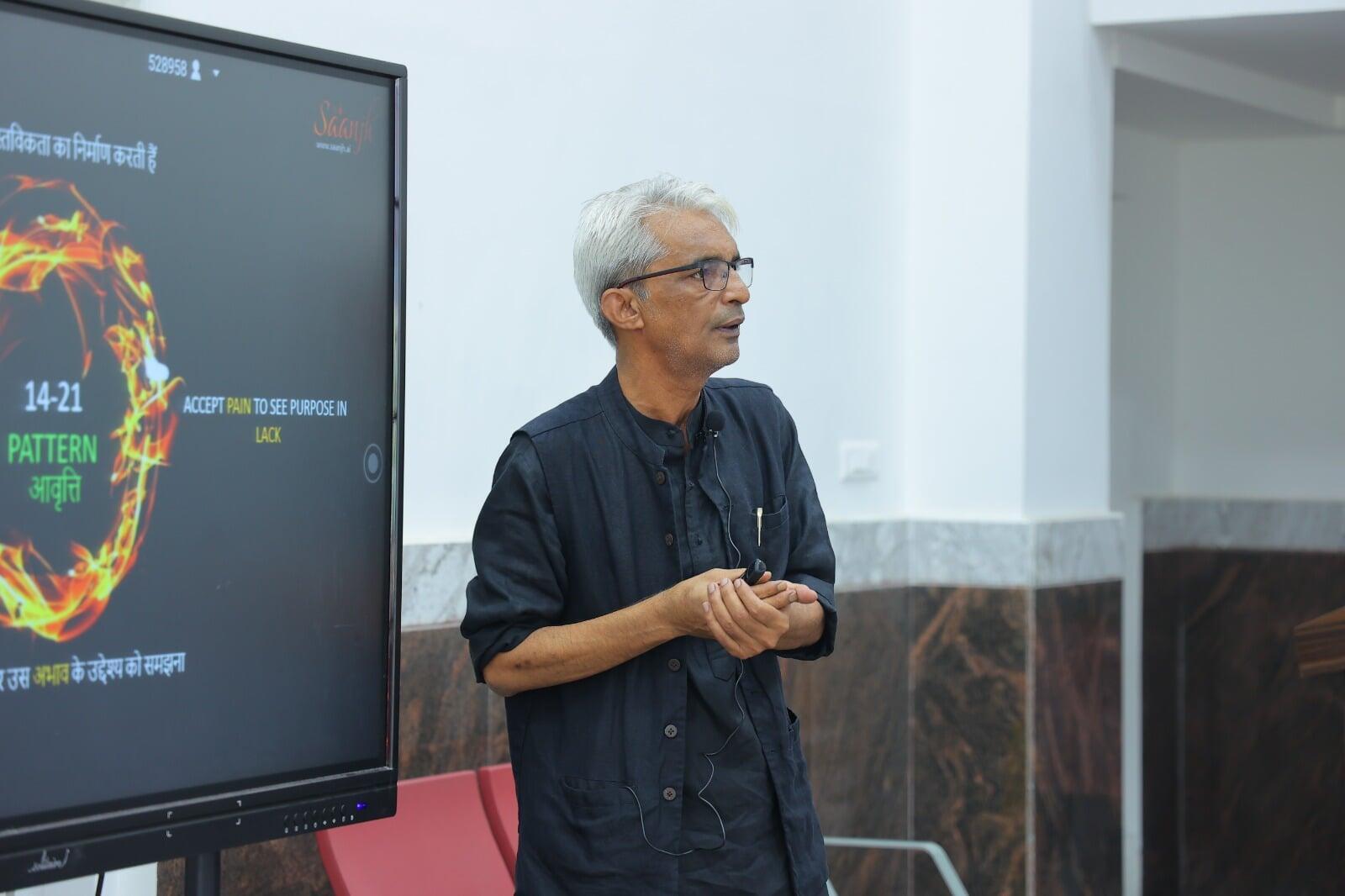
What Ancient Practices Teach Modern Organizations
The Uttarakhand disaster management authority understands something many organizations miss. Secretary Vinod Kumar Suman noted that in today's rushed and stressful lifestyle, humans are moving away from themselves.
This represents forward-thinking systems management. The government recognizes that people managing critical infrastructure need robust internal systems to match the complexity of their external responsibilities. By proactively equipping disaster management professionals with these tools, they're ensuring that those who handle our most challenging situations are themselves well-equipped to maintain clarity and effectiveness under pressure.
Secretary of Ayush Deependra Kumar Chaudhary made a crucial point: health is not just the absence of disease, but mental, emotional and spiritual balance. This isn't philosophy—it's practical systems thinking about human performance.
The Science of Natural Cycles
What makes the Adiyog approach interesting is its focus on living according to the natural cycle of eight prahars (time periods) of the day for natural health restoration.
This aligns with what Saanjh.ai teaches about sleep and natural rhythms. Sleep is a mystical phenomenon that starts with Saanjh, with its secret hidden in the frequency of Prahar.
Both approaches recognize that our bodies run on software designed for natural cycles, not artificial schedules.
The Hidden Infrastructure
The workshop revealed something important about modern work design. USDMA and disaster management department employees remain on alert mode all the time, working day or night as needed—a testament to their dedication to public service.
Recognizing that this level of commitment requires enhanced human capacity, the organization is pioneering what Saanjh.ai calls self-diagnosis, self-prevention, and self-cure—empowering officials with tools to sustain their effectiveness over the long term.
The natural healing camp that followed the workshop offered Ayurvedic treatments, integrating traditional wisdom with modern healthcare to create a comprehensive support system for maintaining optimal human performance under demanding conditions.
The Leadership Signal
The workshop drew significant leadership attention. Additional Chief Executive Officer (Administration) Anand Swarup, Joint Chief Executive Officer Mohd. Obaidullah Ansari, and Dr. K.K. Pandey were among the attendees, alongside Secretary of Disaster Management and Rehabilitation Vinod Kumar Suman and Secretary of Ayush Deependra Kumar Chaudhary.
This high-level participation demonstrates strategic institutional commitment—senior officials recognizing that optimal performance in complex modern systems requires upgrading human capacity alongside technological advancement.
The approach is brilliantly practical: instead of choosing between traditional and modern systems, they're integrating both. Just as organizations maintain their technical infrastructure, they're now investing in biological infrastructure maintenance.
The workshop in Uttarakhand represents organizational evolution—leadership understanding that peak human performance emerges from aligning with natural regulatory mechanisms that enhance rather than compete with modern capabilities.
This isn't wellness as a luxury add-on. It's performance optimization as core infrastructure—ensuring that highly capable professionals have the internal resources to match their external responsibilities.
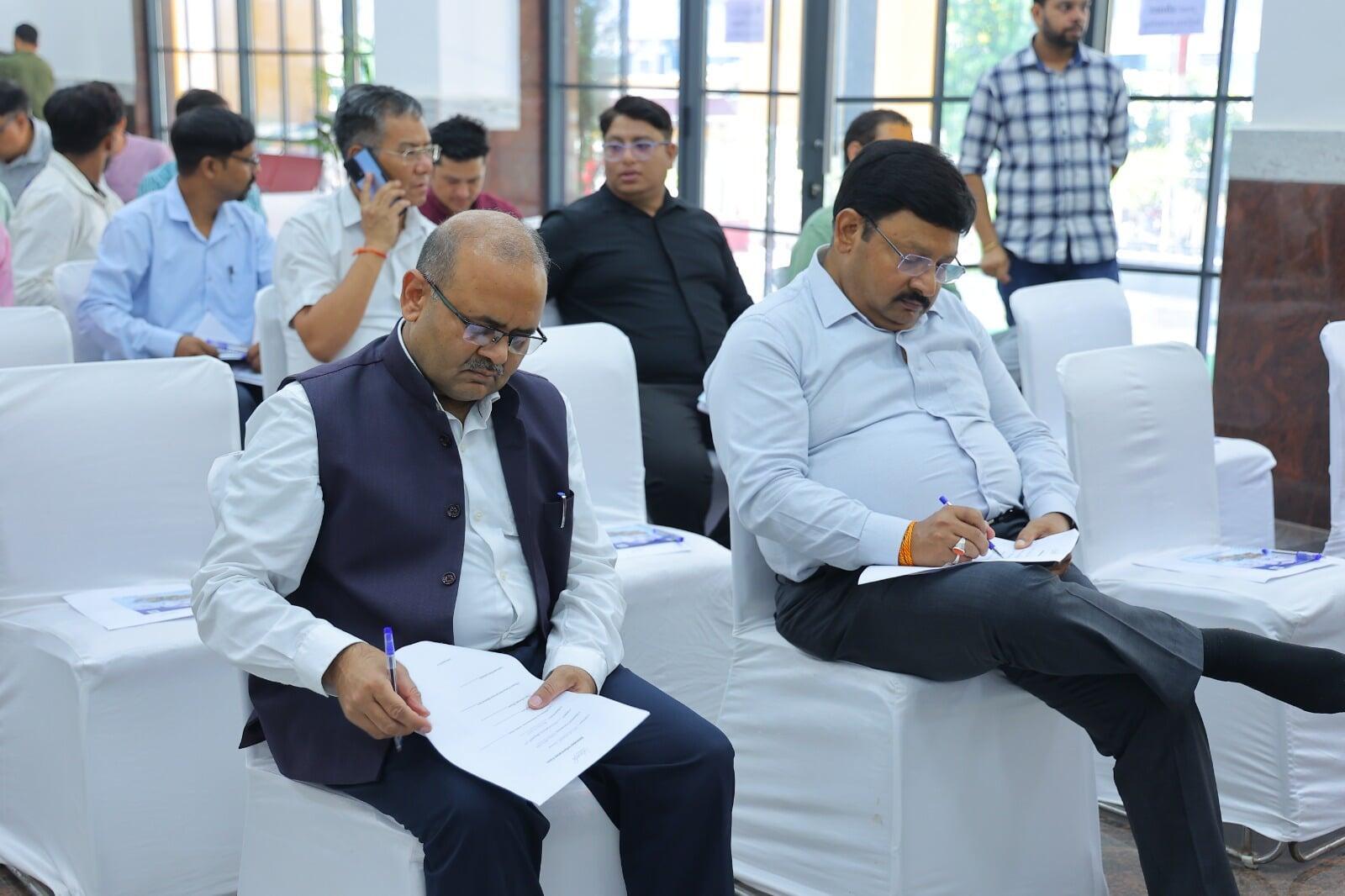
The Practical Question
The question isn't whether breathing techniques work. The question is whether we're wise enough to integrate practices that restore natural human functioning before our systems—personal and organizational—reach their breaking point.
If disaster management professionals need these tools, what does that say about the rest of us?
The officials learned that stress, insomnia, and health disorders are deeply connected to life events. Perhaps the real disaster management begins with managing our internal responses to external pressures.
